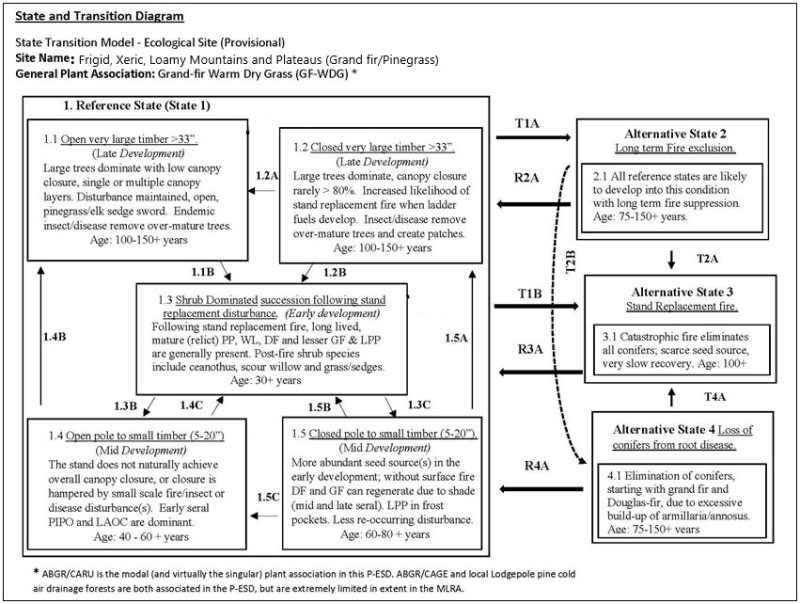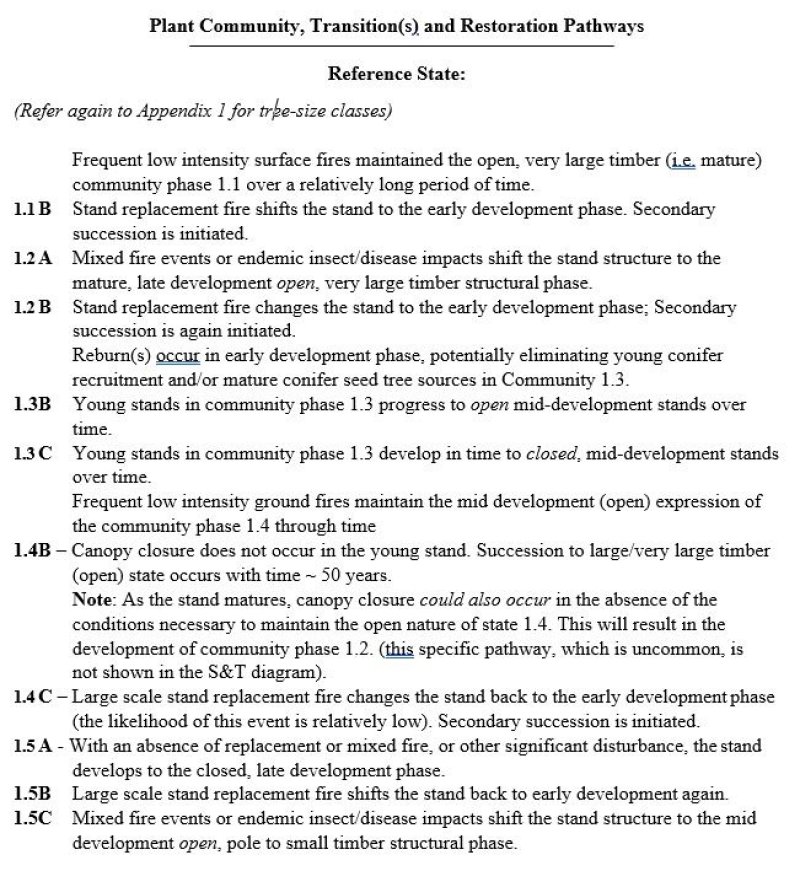
Natural Resources
Conservation Service
Ecological site F043CY508WA
Frigid, Xeric, Loamy, Mountains and Plateaus, Mixed Ash Surface Grand fir/pinegrass
Last updated: 9/08/2023
Accessed: 12/22/2025
General information
Provisional. A provisional ecological site description has undergone quality control and quality assurance review. It contains a working state and transition model and enough information to identify the ecological site.
MLRA notes
Major Land Resource Area (MLRA): 043C–Blue and Seven Devils Mountains
Major land resource area (MLRA): 043C-Blue and Seven Devils Mountains
Description of MLRAs can be found in: United States Department of Agriculture, Natural Resources Conservation Service. 2006. Land Resource Regions and Major Land Resource Areas of the United States, the Caribbean, and the Pacific Basin. U.S. Department of Agriculture Handbook 296.
Available electronically at: http://www.nrcs.usda.gov/wps/portal/nrcs/detail/soils/ref/?cid=nrcs142p2_053624#handbook
LRU notes
Modal LRU – 43C04 Dissected Basalt Highlands
This LRU is composed predominantly of low elevation canyons and mid elevation foothills, mountain slopes, ridges and valley walls The soils of the LRU tend to be loamy Vitrixerands, Argixerolls and Haploxerolls with thick or mixed ash surfaces. Alluvium, loess and colluvium and residuum from basalt are the dominant parent materials. Soil climate is mesic or frigid temperature regime and xeric or udic moisture regime with average annual precipitation around 905 mm (36 inches).
Others where occurring – 43C01 - Cold, Moist Volcanic Highlands
Classification relationships
This ecological site is aligned to the following classification systems:
• NVCS Central Rocky Mountain Grand fir - Douglas-fir Forest & Woodland Alliance (A- 3362).
• U.S. National Vegetation Classification Standard (NVCS) Central Rocky Mountain Grand fir-Douglas-fir-Western larch Forest Group (G211).
• Washington Natural Heritage Program code CEG000275.
• USDA Forest Service Ecological Sub-region M332 “Blue Mountains”.
• LANDFIRE BpS model 10450: Northern Rocky Mountain Dry-Mesic Montane Mixed- Conifer Forest (primary model). Note: BpS model 10500 can be used for the lodgepole pine early seral sites.
• Ecoclass Seral Stage Code CWG113 (Blue-Ochoco PA, 1991).
Ecological site concept
This ESD is distinguished by an overstory of ponderosa pine, grand fir and Douglas-fir with an understory of pinegrass and elk sedge. Shrubs such as common snowberry and Oregon grape may occur but have low coverage. Common forbs are heartleaf arnica, lupines, western hawkweed and strawberry. It occurs on foothills, mountainsides, and canyon walls This ESG fits into the National Vegetation Standard’s Central Rocky Mountain Grand Fir - Douglas-fir Forest & Woodland and Washington State’s Natural Heritage Program’s Northern Rocky Mt. Dry Mesic Montane Mixed Conifer Forest.
Associated sites
| F043CY503WA |
Frigid, Moist-Xeric Loamy, Canyons and Mountains (Grand fir/Moist Shrub) frigid, moist-xeric, ashy surface, basalt/andesite geology. |
|---|---|
| F043CY504WA |
Warm-Frigid, Xeric, Loamy, Basalt Mountains and Plateaus (Douglas-fir/warm dry shrub) warm-frigid, xeric, mixed ash surface, basalt geology. |
Similar sites
| F043CY509WA |
Frigid, Xeric, Loamy Mountains and Plateaus, Ashy Surface Grand fir/pinegrass Ashy surface |
|---|---|
| F043CY503WA |
Frigid, Moist-Xeric Loamy, Canyons and Mountains (Grand fir/Moist Shrub) Moist-xeric soil moisture regime |
| F043CY502WA |
Cool-Frigid, Dry-Xeric, Loamy Mountains (Douglas-fir Cool Dry Grass) Cool-frigid soil temperature regime, dry-xeric soil moisture regime |
Table 1. Dominant plant species
| Tree |
(1) Abies grandis |
|---|---|
| Shrub |
(1) Chimaphila umbellata |
| Herbaceous |
(1) Calamagrostis rubescens |
Click on box and path labels to scroll to the respective text.


